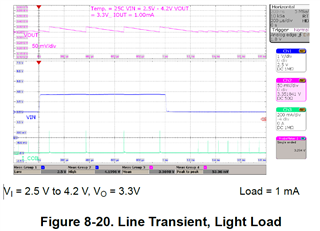Tool/software:
Hi,
Me and my team are evaluating the TPS63900 buckboost converter, maybe to be used in one of our applications (battery-driven IoT).
We want to make precise measurements of the deep-sleep current of our application, so we hope some of you guys can clarify the observed results. Everything regarding output voltage, current limit, etc. is functional.
We're measuring the input side of the TPS63900 with a Joulescope JS220 in a high-side measurement: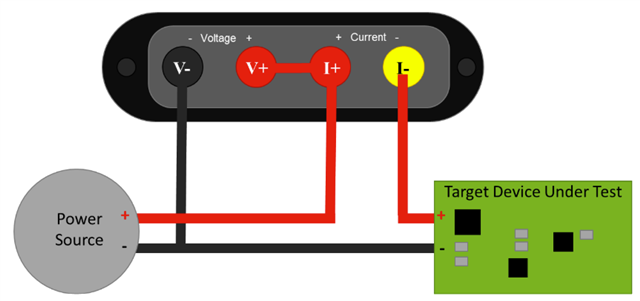
The layout of the TPS63900 is like recommended in the datasheet. no lengthy interconnects, twisted cables, etc.
Measurement 1 (no loaded, open output). 3.3V in (PSU), 3.4V out:
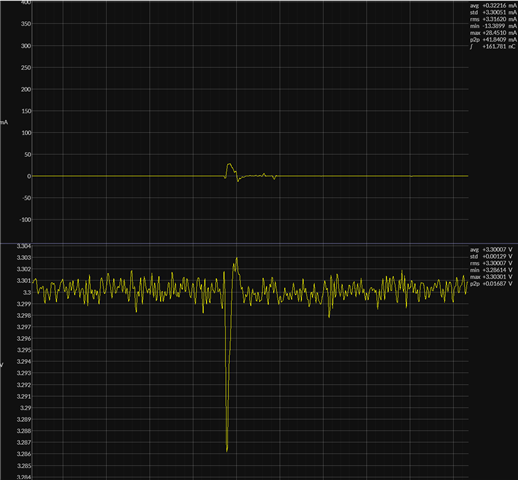
Measurement 2 (load is ESP32 and some few peripherals in deep-sleep). 3.6V in (Li-SOCl2 battery), 3.4V out: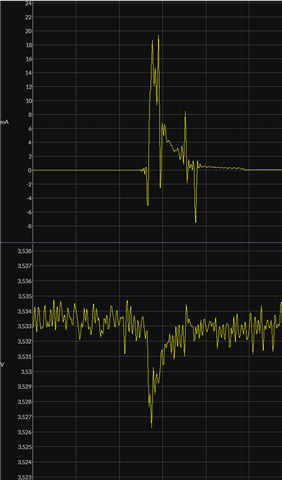
Measurement 3 (same as measurement 2, but zoomed out):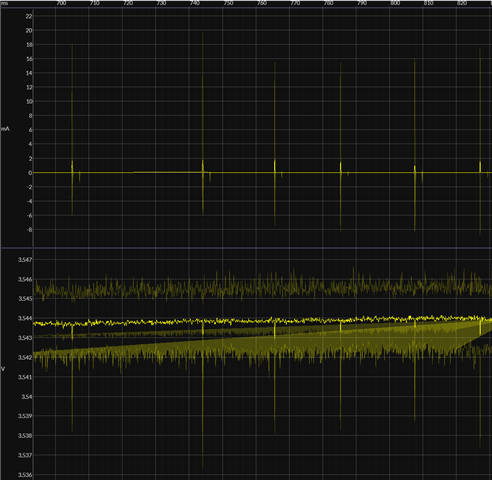
Interpreting results
I can't really see any measurements from the datasheet of the TPS63900 looking like this. The transients occur at different intervals as seen on measurement 3, but look really similar (all presenting same waveform as measurement 2)
... So:
1) Is it simply the input ripple current we're observing? If yes, are there any references to look at to see if it's excessive or we're in the ballpark?
2) Can we actually trust the average current measurements over a long period? I guess so, since inserting a known resistor raises the current baseline as expected.
3) What are the levers to pull in order to acommodate this transient behaviour? Any documents to support this?
4) Any other suggested measurements to be done to give a root-cause analysis? Can a 2-Port Shunt-Through PDN impedance measurement yield any correlation? What is the link?
Hope you guys out there can give a few hints to get me in depth into details!
Best regards, Daniel


